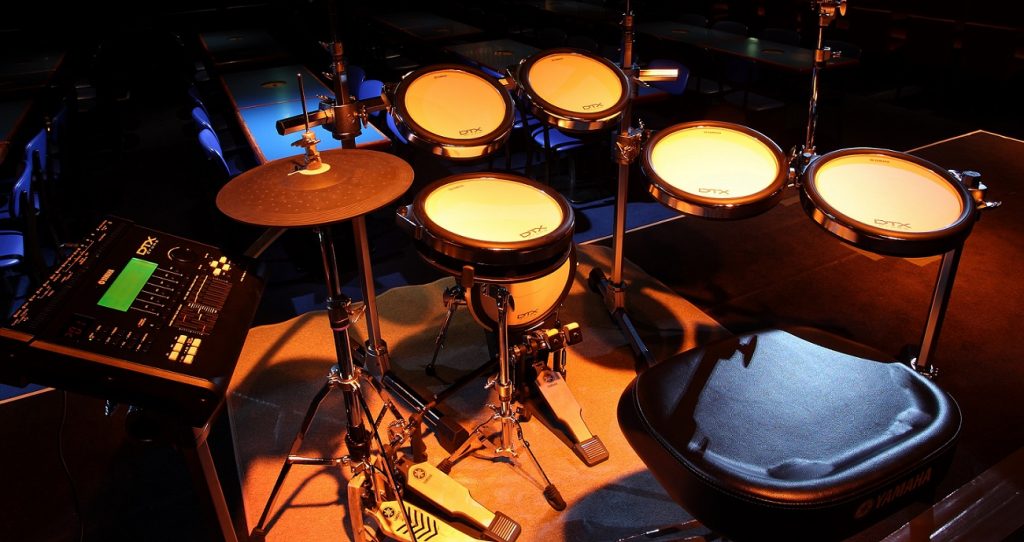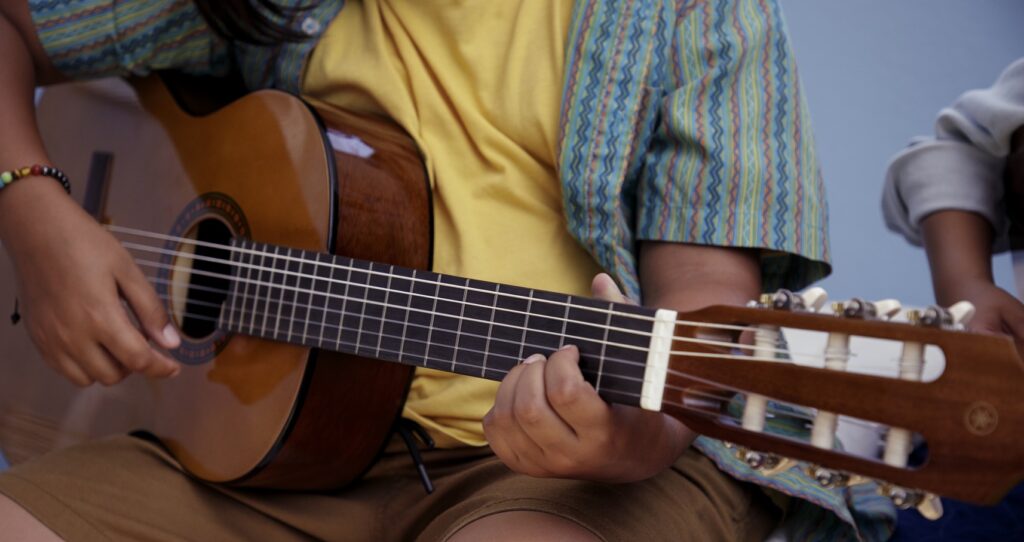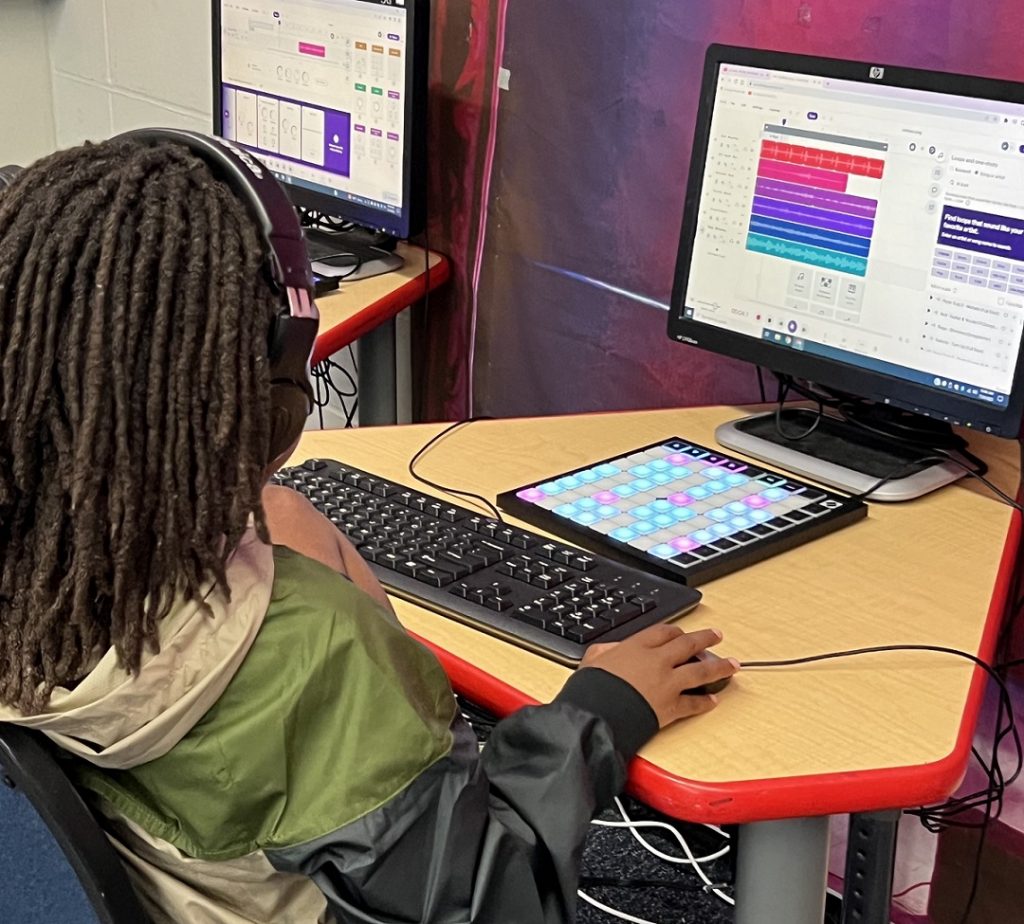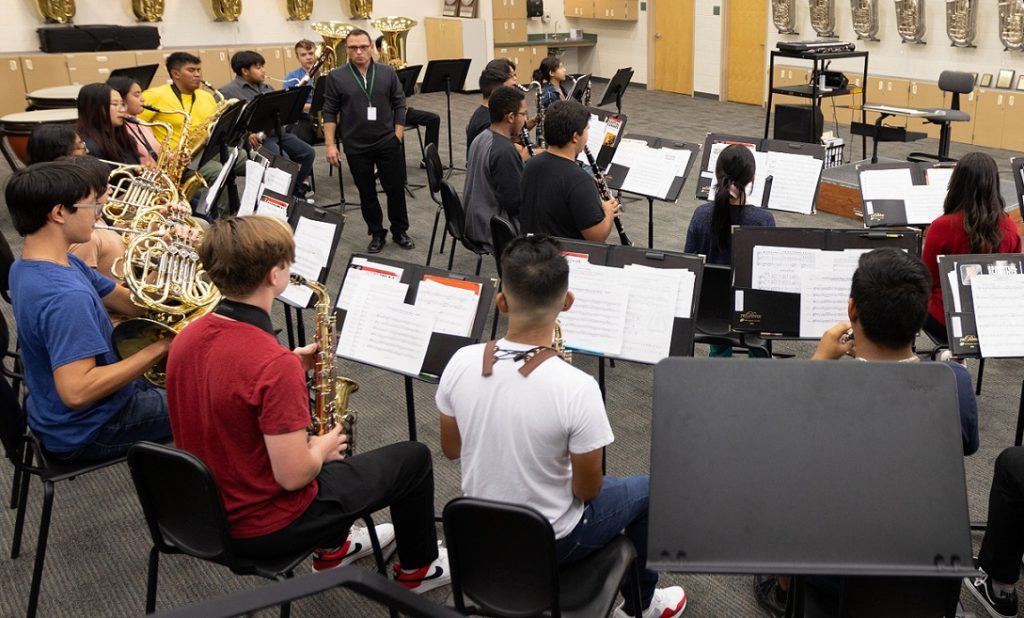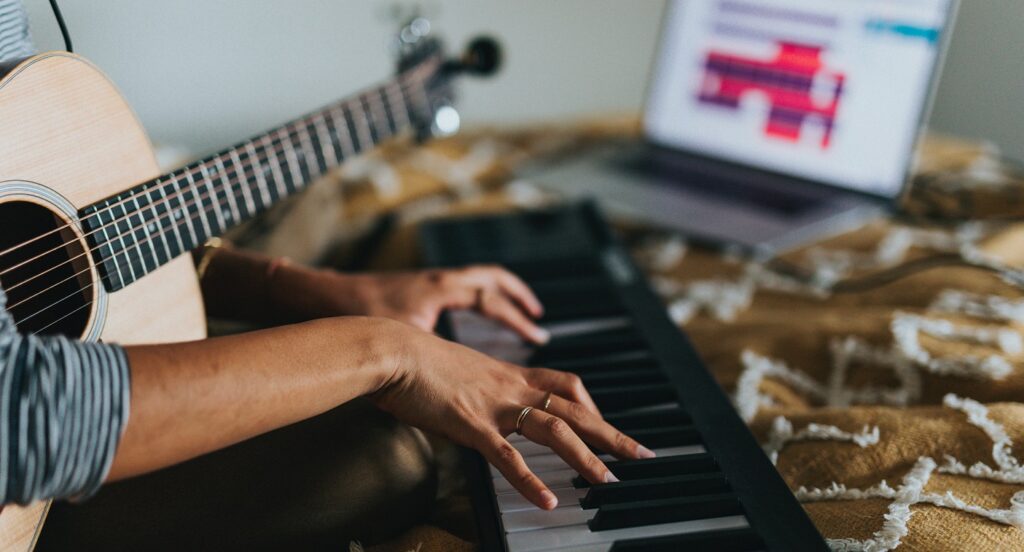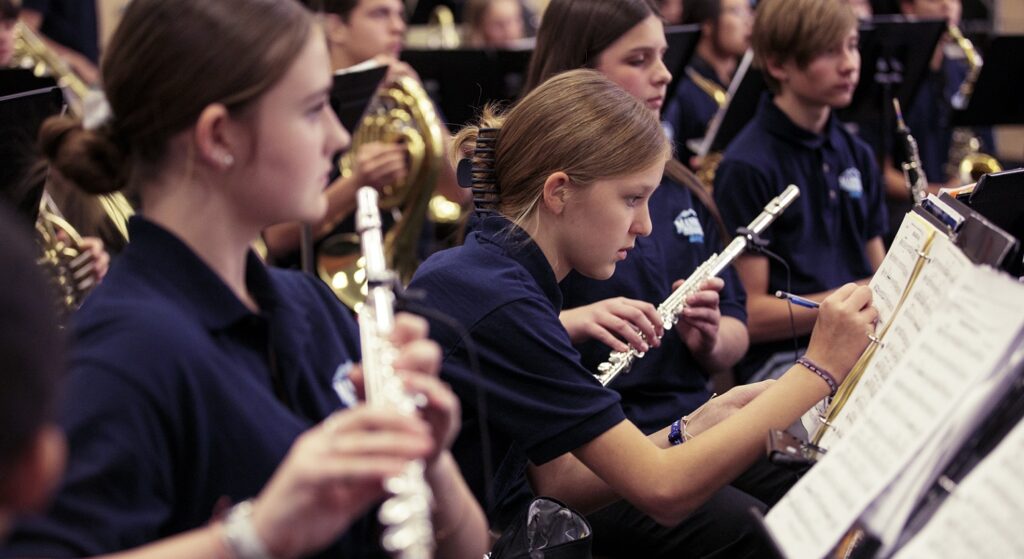Tagged Under:
Music Tech Series, Part 1: Getting Started Teaching the DAW
Transform music education by using new technologies and low-cost gear for recording and composing.
At a steady rate, music technology continues to change the landscape of the music industry at large. With professional music equipment and software becoming more affordable every day, musicians are turning toward low-cost gear for recording and composing. Now musicians can create high quality songs on their own schedule and share it with others online, without record company contracts or expensive studio sessions.
With more than 60,000 songs released on Spotify daily, self-publishing is another low-cost option for serious musicians hoping to reach large audiences on top streaming platforms. These small investments have landed big wins for artists like Billie Eilish, Steve Lacy, Calvin Harris and Nosaj Thing who all recorded hit songs from their DIY bedroom studios. Today, young music students have already had access to some of these tools before beginning formal music education. It’s clear to see how music education should also transform with the rise of these new technologies.
The Enrollment Dilemma

According to a study from the Arts Education Data Project, out of the 92% of students who have access to music in their schools, only about 49% are participating. There’s no doubt that music education positively impacts millions of students, but the impact could be greater. With almost half of our students lacking a formal music education, it warrants a conversation about what we can do to provide more opportunities for our students.
With music enrollment significantly dropping between 7th and 8th grade, course options are also an important topic of conversation. “The Status of Music Education in US Public Schools,” a survey administered by The Give A Note Foundation, determined that the most common course offerings, making up 75% of the total, were “traditional ensembles of band, chorus, and orchestra.” The other 25% or less were listed as “expanded, non-traditional offerings [including] guitar, music appreciation, music theory, and keyboard.”
It’s important to note that these traditional music classes are an essential part of the foundation of music education as they continue to support students’ social-emotional and cognitive growth. However, students who are late to joining traditional ensembles can sometimes feel discouraged to stay if they lack formal training. Similarly, students who play non-traditional music on popular music instruments such as electric guitar, electric bass, synthesizer and drum set can also struggle to find their place in band, choir and orchestra.
So, where do we go from here? With lower enrollment numbers and minimal variety in class offerings, it’s worth considering how we can begin to innovate our traditional ensembles and music course options to provide more opportunities for students. With more than 90% of middle and high school students and 84% of elementary students having access to a school-issued device since 2020, music technology is a great and easy place to start.
THE YAMAHA EDUCATOR NEWSLETTER: Join to receive a round-up of our latest articles and programs!
The DAW Advantage
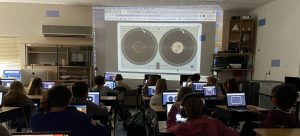
Music educators Will Kuhn and Ethan Hein, authors of “Electronic Music School,” emphasize that “digital audio production gives us an unprecedented opportunity to support students in active, culturally authentic music-making, regardless of their level of pre-existing ability.”
As most students in traditional ensembles are expected to have previous musical experience on an instrument, students using digital audio workstations (DAW) can begin learning at any age, with little to no music experience required.
Students using a DAW can also exercise “multiple types of musical skills.” Peter R. Webster defines these skills as “enabling skills” in which students exercise various levels of convergent and divergent thinking. As students occupy multiple roles in the music-making process, they are learning to become a “hyphenated musician,” a term coined by Even Tobias. Reflective of “how DAWs enable one musician to occupy multiple roles,” hyphenated musicians are commonplace in the industry from songwriter-instrumentalists like Paul McCartney and Taylor Swift to instrumentalist-composer-producers like Imogen Heap and Calvin Harris.
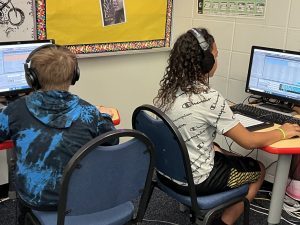
Today, having access to a DAW is as easy as searching for a website. Some free or low-cost web-based DAWs are great for students who want to access their music projects anywhere. Students can also collaborate with other classmates in the same project and record using USB MIDI devices like keyboards or grid controllers in the DAW. Teachers also have their own set of functions for assigning project templates through their LMS for grading, project feedback and portfolio building.
Professional software DAWs like Cubase are great secondary grade level options, as they host a variety of advanced features, sound engines, audio/MIDI effects and customizable settings. Consider both web-based and software DAWs in your search for the best workstation for your classroom.
Developing a Music Tech Curriculum
When choosing a music technology curriculum, it’s important to consider the musical interests of your students. If they are learning how to create music they identify with and enjoy, they will relish the learning process and will be motivated to work through difficult challenges. Karen Brennan, a professor at Harvard University, writes, “Music education will be most engaging and meaningful when the teaching strategies support students’ agency in their own learning.”
Giving students the ability to define their own learning goals allows them to take ownership of the learning process and connect to each project in a meaningful way.
Figures 1 and 2 are examples of a sequence and unit outline for teaching secondary level music technology (though it can be adapted for primary grades). Based on state and national music standards, as well as the hybrid learning model, this curriculum engages students in project and inquiry-based learning through a variety of multi-skill building activities. The six objectives are ear training, music history and listening, musical style and techniques, timbres and stylistic arranging, electronic composition and performance, and proficiency and project assessment outlined below.

As students progress through each unit, they learn important facts about each genre, unique stylistic elements and techniques for recreating the style in the DAW. The unit sequence can be repeated for every applicable genre. Recommended genres include rock, jazz, pop, classical, hip hop and country, but it’s appropriate to select genres based on available technologies/instruments and your students’ areas of interest.
Toward the end of the school year, students will select a genre and build a showcase project based on the techniques and skills they have learned. The showcase project can be independent or collaborative. These projects can be shared online, played at a school event or featured at a school art festival or music concert.
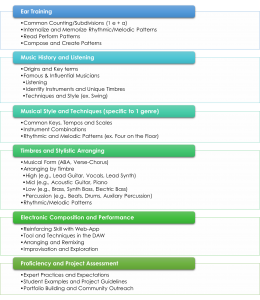
Necessary Tech and Tools
Technologies and tools are essential components of this curriculum. Be sure to determine what technologies are already available at your school, then consider the following as you continue to build your equipment list. The first tier outlines the basic technologies required for students to participate. Additional tiers include more advanced tools for professional recording and music production.
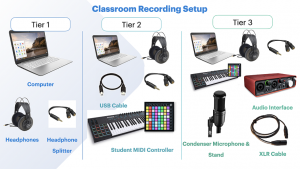
Extra headphone splitters, USB cables, XLR cables and quarter-inch headphone adapters are also handy to have in the classroom. If you are looking for an easier alternative for a microphone setup, USB microphones are also a great option. Though the sound quality may not be as high as a traditional mic, they still are feasible for vocal and instrumental recording.
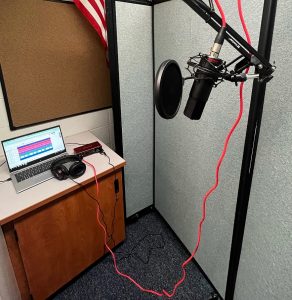
Having an isolated practice room or space in the classroom for more professional recording is always a treat for students who like to stay after class and record music. To create this, add an additional computer setup with an interface, headphones, microphone stand, condenser mic and pop filter. Most of these recording technologies can be purchased as a bundle online for a discounted rate. Adding a microphone isolation shield or acoustic paneling can also help reduce unwanted noise and soundwave reflections. An unused classroom partition can be an inexpensive solution for this as well. Here is an example of a low-cost set-up for a classroom DIY recording studio.
In this article series we will continue to explore more lessons within elementary music technology, middle school and high school music production. We will also cover important aspects of an interdisciplinary curriculum including essential objectives, technology tips and trademark stages of learning. Stay tuned!











